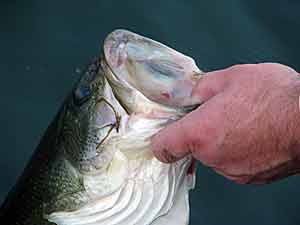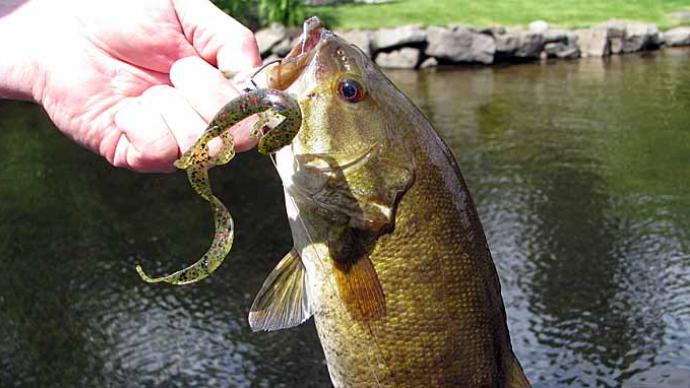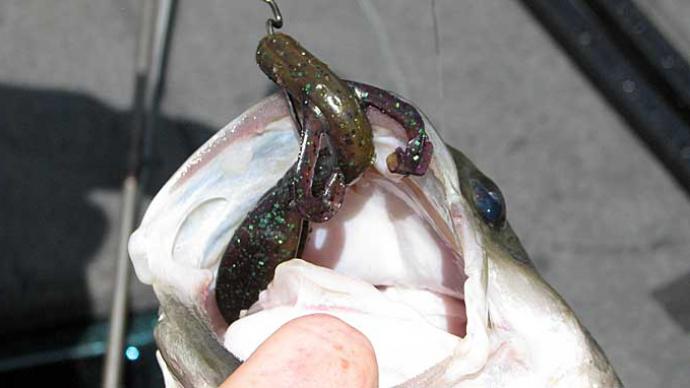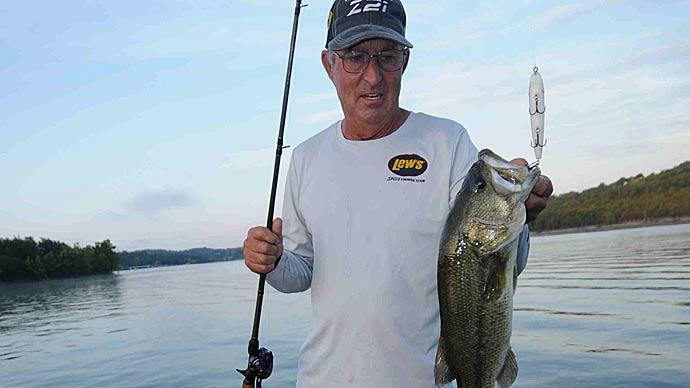
The temperature day after day continues to fall along with the water level on the Tennessee River. The shad are starting to migrate tot the mouths and secondary points in the creeks. This is the typical transition for shad during the fall. This transition from the deep depths of the river to the shallow channel of the creeks makes it tough for anglers when it comes to catching fish. But let’s look at a few ways to do this.
First, find the baitfish. Bass will not actively feed in creeks if baitfish are not there yet. One thing to keep in mind when it comes to catching fish in the tougher times, is to try to be as different as you can. It does not have to be a drastic change to catch these finicky fish just a subtle difference can make bass bite what you have to offer. One thing I like to do is, as Ike calls it, “Match the hatch.” The main source of food for bass during the transition is shad. A bait that can be a great contributor on tournament day, is the Zoom magnum fluke. But, there are just a few small adjustments that can be done to this lure to stand out when it comes to getting those key bites.
Adjustment #1 - Change sizes to give the bass a “new” lure to grab ahold of. When it comes to catching fish this time of year, sometimes you just have to be doing something different than other anglers. Bass have seen a lot of big crank baits, worms and jigs. However, throwing a magnum fluke is my go to bait when it comes to this aspect of it. This size fluke is often overlooked, so the bass are not as conditioned to the magnum fluke as say a super fluke or crank baits. This size is also going to tap into the natural instinct of a bass to eat a bigger meal and waste less energy. Bass would rather just eat fewer times on bigger shad than run all throughout the creek chasing small ones.
Think of it as tournament fishing to anglers. We would rather go where we will get five BIG bites over 20 small bites. Just makes sense (sometimes). I like to rig it up on my Denali J2 6’8” worm/jig rod. The heavy action with a medium fast tip allows me to really give the fluke an erratic action to create more of a reaction bite, and still have the backbone to get the fish in the boat.
Adjustment #2 - Spice up your presentation to get that reaction strike. One way I have found to do this is by adding to the setup of my fluke rig. Do not just limit this to a super fluke or magnum fluke. What I like to do is to grab a couple three-sixteenth ounce weights and a fairly small drill bit and bore out the center of the weight. Drill it out just enough for it to slide over the point of the hook to the belly of the hook. This is going to add more action to your presentation. The added weight will allow the fluke to sink faster.
Faster moving baits tend to do well when the water temperature is on the warm side. The weights also will move back and forth along the belly of the hook to create noise. This is something else that makes this presentation unique. How many times have you thrown a fluke and it rattled or made noise? I think the answer is not once. Make sure when you slide the weight on the hook that the point of the weight is facing away from the belly of the Zoom fluke. Any size weight can be used as long as it will fit on the hook. Experiment with different size weights to get the action that works best for you.
Following these two small tips is just a start on what any angler can do to catch more fish. It takes time on the water. This is the most important aspect of it all. So, go out on the water, try these few tips, and you just might find the summer/fall transition is a great time to catch a big one. Just remember, find the baitfish and you will find the bass.
26 year old Daniel Richardson has been fishing for 6 years, 5 of those competitively. He fishes many local tournaments as well as the Fishers of Men tournament trail in Alabama, and usually places in the top 10. His home lake is Kentucky Lake.




